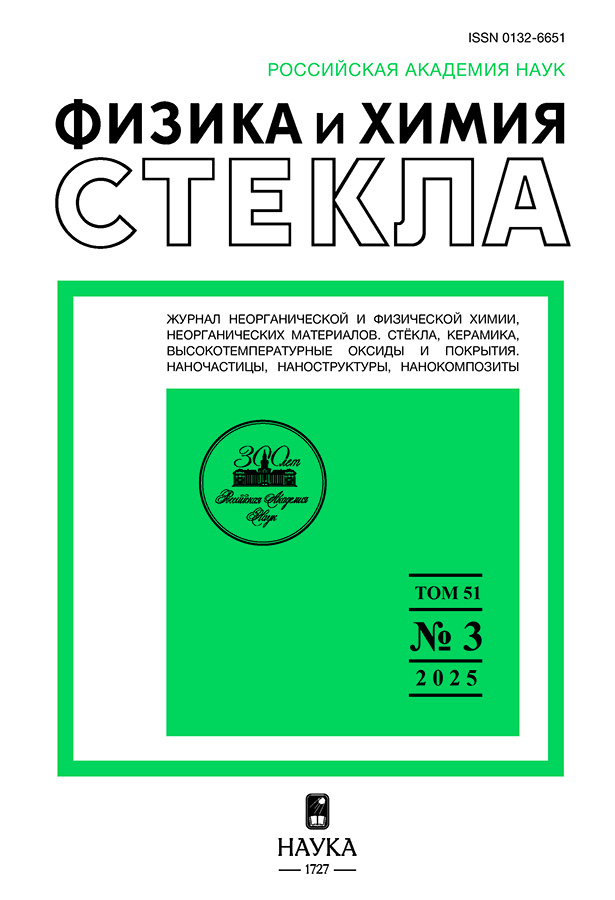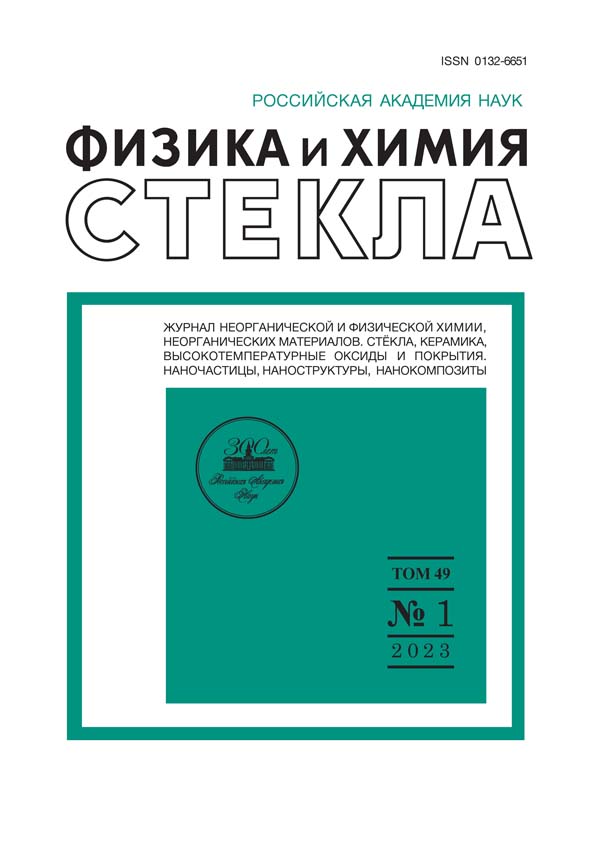Том 49, № 1 (2023)
Статьи
Кластерная самоорганизация интерметаллических систем: новые двухслойные кластерные прекурсоры K57 = Li@15(Ga6Cu9)@41(Cu15Mg26) и K41 = 0@8(Mg2Ga6)@33(Li6Mg3Ga24) в кристаллической структуре Li10Mg34Cu24Ga71-hP139 и K5 = 0@Ca2LiInGe в кристаллической структуре Ca2LiInGe2-oP24
Аннотация
Проведен геометрический и топологический анализ кристаллической структуры интерметаллида Li10Mg34Cu24Ga71-hP139 (a = 14.080 Å, c = 13.625 Å, V = 2339.36 Å3, P-6m2) и интерметаллида Ca2LiInGe2-oP24 (a = 7.251, b = 4.438, c = 16.902 Å, V = 543.9 Å3, Pnma). Для интерметаллида Li10Mg34Cu24Ga71-hP139 методом полного разложения 3D фактор-графа на кластерные структуры найдено 1319 вариантов кластерного представления 3D атомной сетки с числом структурных единиц от 3 до 9. Установлены два каркасобразующих нанокластеров K57 = Li@15(Ga6Cu9)@41(Cu15Mg26) с внутренним полиэдром Франка–Каспера Li@15(Ga6Cu9) и K41 = 0@8(Mg2Ga6) @ 33(Li6Mg3Ga24) с внутренним полиэдром в виде гексагональной бипирамиды 0@8(Mg2Ga6). Центр кластера-прекурсора K57 и K41находится в частных позициях 1f и 1c с симметрией g = –6m2. В большой полости каркаса расположены сдвоенные LiGa13 – полиэдры с центром в позиции 1b. Для интерметаллида Ca2LiInGe2-oP24 установлен кластер-прекурсор K5 = 0@Ca2LiInGe в виде треугольной бипирамиды с атомами Li, In и Ge, лежащими в основании бипирамиды и атомами Ca, являющимися вершинами бипирамиды. Реконструирован симметрийный и топологический код процессов самосборки кристаллических структур Li10Mg34Cu24Ga71-hP139 и Ca2LiInGe2-oP24 из кластеров-прекурсоров в виде: первичная цепь → слой → каркас.
 3-14
3-14


Самоорганизация интерметаллических систем: новые кластерные прекурсоры K12 =0@12(Li9Ge3) и K9 = 0@9(Li8Ge) в кристаллической структуре Li68Ge16-oC84, кластерные прекурсоры K11 =0@11(Li6Ge5) и K6 = 0@6(Li5Ge) в кристаллической структуре Li44Ge24-oC68, и кластерные прекурсоры K6= 0@6(Li3Ge3) в кристаллической структуре Li12Ge12-tI24
Аннотация
Проведен геометрический и топологический анализ кристаллических структур интерметаллидов Li68Ge16-oC84 (a = 4.551 Å, b = 22.086 Å, c = 13.275 Å, V = 13.275 Å3, Cmcm), Li44Ge24-oC68 (a = 4.380 Å, b = 24.550 Å, c = 10.540 Å, V = 1144.11 Å3, Cmcm), и Li12Ge12-tI24 (a = b = 4.053 Å, c = 23.282 Å3, I41/amd). Для интерметаллида Li68Ge16-oC84 установлены два новых каркасобразующих кластера: K12 = 0@12(Li9Ge3) с симметрией m в виде связанных 5-ных колец Li3Ge2 и Li4Ge, с атомами Li, расположенными в центре 5-ных колец, и K9 = 0@9(Li3Ge)(Li3)2 с симметрией m в виде связанных 3-ных колец (Li3)(GeLi2)(Li3). Для интерметаллида Li44Ge24-oC68 установлены два новых каркасобразующих кластеров: K11 = 0@11 (LiLi5)(Ge5) с симметрией m в виде 5-ных колец Ge5 (лежащих в основании пирамиды), которые связаны с 5-атомами Li, лежащими в одной плоскости с атомом Li (вершиной пирамиды) и K6 = 0@ 6(GeLi5) с симметрией m в виде сдвоенных тетраэдров Li3Ge, имеющих общее ребро LiGe. Для интерметаллида Li12Ge12-tI24 установлен каркасобразующий кластер K6 = 0@ 6(Ge3Li3) с симметрией 2 в виде сдвоенных тетраэдров Li2Ge2, имеющих общее ребро LiGe. Реконструирован симметрийный и топологический код процессов самосборки кристаллических структур Li68Ge16-oC84, Li44Ge24-oC68, Li12Ge12-tI24 из кластерных прекурсоров в виде: первичная цепь → слой → каркас.
 15-26
15-26


Механическая стойкость поверхности кварцевого стекла, подвергнутого тонкому отжигу
Аннотация
Представлены результаты исследования состояния поверхности кварцевого стекла с высоким содержанием групп OH, полученного высокотемпературным гидролизом SiCl4 и подвергнутого тонкому отжигу. Сравнение инфракрасных спектров отражения до и после отжига показали распад силанольных групп с выходом воды из материала и появлением немостиковых групп Si–O–. Часть немостиковых связей восстанавливается с образованием трех- и четырехчленных силоксановых колец. Для оценки изменения механических свойств поверхности стекла при отжиге образцы повергались точечному ударному повреждению, при котором методом акустической эмиссии контролировалась интенсивность накопления микротрещин в поврежденном слое. Отмеченное ослабление механической прочности поверхности отожженного стекла отнесено образованию “малых” силоксановых колец и уменьшению связности силикатной сетки из-за наличия остаточных немостиковых связей.
 27-33
27-33


Интенсификация процесса выщелачивания силикатных стекол кислыми газами
Аннотация
Анализируются и обобщаются результаты исследований по интенсификации процесса выщелачивания щелочносиликатных промышленных и синтезированных стекол кислыми газами. Идентифицирован состав продуктов реакции стекол с газообразными реагентами при помощи рентгенофазового анализа, рентгеноспектрального электронно-зондового микроанализа, термического анализа, пламенной фотометрии и количественного химического анализа. Определены физико-химические свойства промышленных стеклоизделий, модифицированных газообразными реагентами в лабораторных и заводских экспериментах. Обсуждаются пути интенсификации процесса выщелачивания силикатных стекол кислыми газами.
 34-46
34-46


Парообразование и термодинамические свойства системы SrO–Al2O3–SiO2
Аннотация
Методом высокотемпературной дифференциальной масс-спектрометрии изучено парообразование и термодинамические свойства системы SrO–Al2O3–SiO2 в области концентраций от 90 до 10 мол. % SrO и мольном соотношении x(Al2O3)/x(SiO2), равном 1.5. Испарение образцов проводилось из эффузионных камер Кнудсена, изготовленных из вольфрама. Определены парциальные давления молекулярных форм пара, активности компонентов конденсированной фазы, энергии Гиббса и избыточные энергии Гиббса. Установлено, что изученная система характеризуется незначительным отрицательным отклонением от идеального поведения. Для муллита (Al6Si2O13) определена величина стандартной энтальпии образования. Методом высокотемпературной микроскопии установлены температуры плавления синтезированных образцов.
 47-59
47-59


Природа локального окружения атомов в аморфных и кристаллических пленках Ge3Sb2Te6, Ge2Sb2Te5, GeSb2Te4 и GeSb4Te7
Аннотация
Методом мессбауэровской спектроскопии на изотопах 119Sn, 121Sb и 125Te определено валентное состояние и локальное окружение атомов в аморфных и кристаллических пленках Ge3Sb2Te6, Ge2Sb2Te5, GeSb2Te4 и GeSb4Te7. В кристаллических пленках двухвалентный германий находится в октаэдрических позициях ромбоэдрически искаженной решетке типа NaCl, тогда как в аморфных пленках четырехвалентные атомы германия образуют тетраэдрическую систему химических связей. Во всех пленках в ближайшем окружении германия находятся преимущественно атомы теллура. Трехвалентные атомы сурьмы в кристаллических и аморфных пленках занимают два типа октаэдрических позиций, различающихся степенью искажения, а в ближайшем окружении сурьмы находятся атомы теллура. Наконец, во всех пленках локальные структуры атомов теллура соответствуют структурным единицам теллура в соединениях GeTe и Sb2Te3.
 60-70
60-70


Электротранспортные и термические свойства твердых растворов NdBa1 – xMgxFeCo0.5Cu0.5O5 + δ (0.00 ≤ x ≤ 0.40)
Аннотация
Керамическим методом синтезированы двойные перовскиты NdBa1 ‒ xMgxFe Co0.5Cu0.5O5 + δ (0.00 ≤ x ≤ 0.40), исследованы их структура, кислородная нестехиометрия (δ), термические и электротранспортные свойства. Соединения NdBa1 – xMgxFeCo0.5Cu0.5O5 + δ имеют тетрагональную структуру (пр. гр. симм. P4/mmm) и являются полупроводниками p-типа, характер электропроводности которых при повышенных температурах изменяется на металлоподобный ввиду выделения из образцов кислорода. Частичное замещение бария магнием в NdBaFeCo0.5Cu0.5O5 + δ приводит к уменьшению содержания кислорода в образующихся при этом твердых растворах, возрастанию размеров их элементарной ячейки и коэффициента термо-ЭДС, уменьшению термической стабильности, коэффициента линейного теплового расширения и электропроводности. Рассчитаны значения энергетики электропереноса, взвешенной подвижности и концентрации носителей заряда в изученных материалах.
 71-79
71-79


Натурные испытания защитных эпоксидных покрытий в условиях влажного тропического климата
Аннотация
Представлены результаты исследования устойчивости защитных покрытий трех составов к атмосферной коррозии в условиях влажного тропического климата (СР Вьетнам). Изучен процесс биологического обрастания покрытий в естественных условиях Южно-Китайского моря. В качестве объектов исследования были выбраны покрытия на основе циклоалифатической эпоксидной смолы, модифицированной эпоксидным каучуком с наполнителями (слюда-мусковит, TiO2). Для улучшения антикоррозионных и противообрастающих свойств покрытий в их состав был введен комплекс триэтаноламина с циннаматом кобальта(II), обладающий ярко выраженной противомикробной активностью.
 80-88
80-88


Базальтовое супертонкое волокно как основа матрицы огнестойкого заполнения деформационных швов в строительных конструкциях
Аннотация
В статье исследуется огнестойкость конструкции с противопожарным барьером на основе супертонкого базальтового волокна для огнестойкой заделки швов и примыканий в составе железобетонных конструкций в условиях знакопеременной деформации. В европейских нормативных документах такие противопожарные барьеры специально разрабатываются для применения в деформационных швах и работают при сжатии, растяжении и сдвиге шва. В России изделия и материалы, выполняющие функцию противопожарного барьера, не испытываются в условиях знакопеременной нагрузки. В статье приведена методика испытаний на огнестойкость для деформационного шва в железобетонной конструкции. Получены результаты по параметрам целостности (E) и теплоизолирующей способности (I) для железобетонных плит с последующим в сторону увеличения ширины зазора между плитами и сдвига их относительно друг друга на +25% составляет не менее 245 мин.
 89-96
89-96


Декомпозиция гиббсита из алюминатных растворов в низкоинтенсивных ультразвуковых полях
Аннотация
Приводятся результаты лабораторных исследований практического приложения безреагентного метода тензоимпульстой регуляции в промышленном способе получения гиббсита из алюминатных растворов по методу Байера. При декомпозиции в регулятивных режимах размер и однородность кристаллов возрастает, наблюдается увеличение скоростей растворения затравки и кристаллизации гиббсита. Даны количественные характеристики степени превращений и определены параметры кристаллов гиббсита, полученного традиционным способом и в разных режимах регуляции. Описываются результаты рентгенофазового исследования и гранулометрического анализа изображений, полученных на растровом электронном микроскопе.
 97-106
97-106


Регулирование реакционной способности заполнителей и минеральных добавок в портландцементных композициях посредством электронно-лучевой и термической обработки
Аннотация
Изучено влияние электронно-лучевой и термической обработки (ТО) кремнеземсодержащих заполнителей минеральных добавок на интенсивность протекания щелочно-силикатных реакций с их участием, представляющих опасность для бетонных конструкций. Установлено, что нагрев до температуры 900°С и электронно-лучевой обработки песка, не содержащего включений, реакционноспособных по отношению к щелочным компонентам, приводят к значительному увеличению реакционной способности цементно-песчаных растворных смесей, возрастающей с увеличением поглощенной дозы, и соответствующему повышению содержания кислотных гидроксильных групп на поверхности песка. В случае песка, содержащего реакционноспособные включения халцедона, электронно-лучевая обработка приводит к росту реакционной способности, а термическая – к ее снижению. Обработка минеральных добавок микрокремнезема и метакаолина, способных к ингибированию щелочно-силикатных реакций, приводит к усилению их ингибирующего действия. Полученные результаты перспективны для моделирования процессов расширения бетонов в результате щелочно-силикатных реакций и повышения их стойкости к разрушению в щелочных средах.
 107-114
107-114













